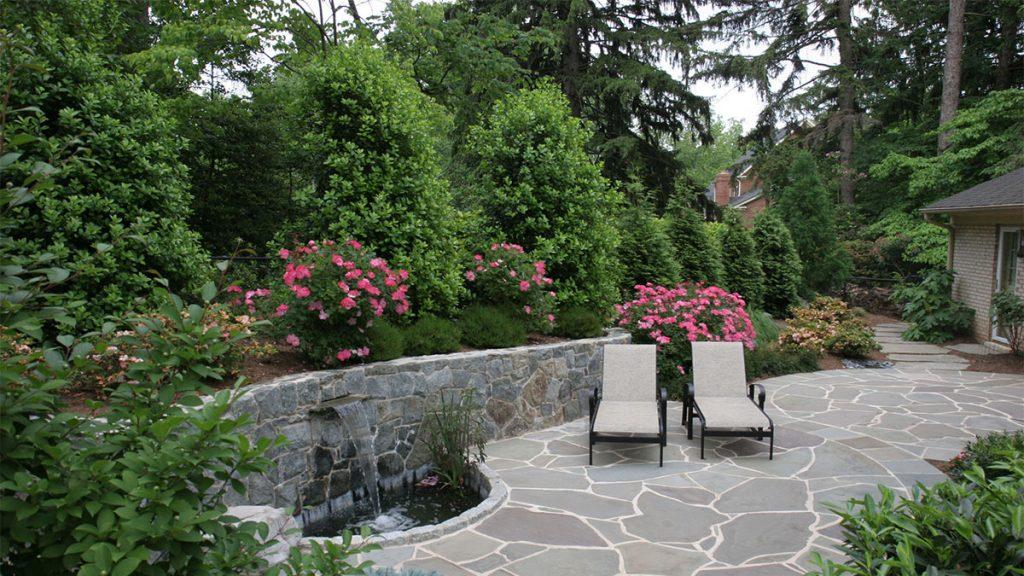You know the feeling. It’s that spidey sense that you’re on view in your own outdoor space. Feeling exposed makes it hard to relax and enjoy being outside. Who wants that?
You could, install a fence or a wall made from a solid material such as brick or stone. While pricey (an average of $16 per foot for a fence and the skies the limit for a solid wall), it’s likely money well spent. The downsides are that you may face restrictions on height, placement, and style, and tall fences and walls can make a space feel confining rather than cozy.
A more integrated privacy solution is to use plants (with or without a fence or wall) that have lots of texture, form, and color to incorporate your landscape’s design while still providing plenty of sexy solitude. And this isn’t just limited to hedges planted in the ground–planters, trellises, hanging baskets can all be put to work to to give you the privacy you crave.
But first, there are a few questions you need to ask yourself. Here are 4 things to consider when planting for privacy. (BTW, according to SmartMoney.com, hedges alone raise property values by 3.6 percent.)
For more tips and ideas regarding hedge plants for privacy: Zone: 3 – 7 and Zone 8 – 11
4 Most Common Mistakes
Creating a fortress that feels tight and cramped rather than pleasant and peaceful.
Not factoring in seasonal versus year-round privacy needs when selecting plants.
Choosing the “fastest” solution over the best long-term solution.
Not installing proper irrigation.
JUST HOW MUCH PRIVACY DO YOU ACTUALLY NEED?
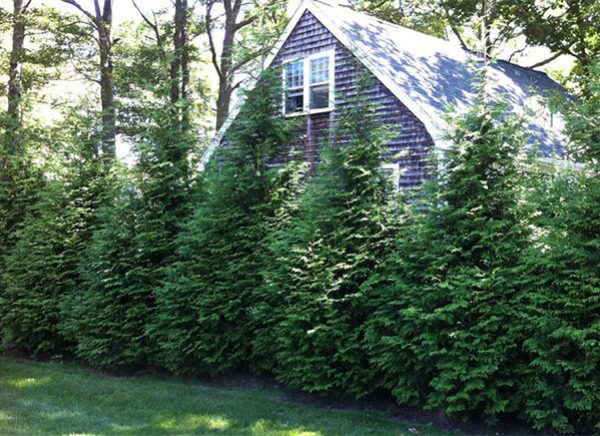
If you need wall-to-wall privacy, think hedges. Before selecting plants, decide if you need year-round or just seasonal privacy which can expand your choices. Options for high, medium, and low privacy.
(Left) High: A row of evergreens (here Green Giant Western Arborvitae) provides year-round privacy, acts as a windbreak, and helps absorb ambient noise. More: Hollies, Conifers, Camellias, Laurels.
(Lower left) Medium: Tall deciduous shrubs (this is Limelight Hydrangea) provide showy seasonal screening, typically in spring and summer– that might be enough. More: Spirea, Viburnums, Rhododendrons.
(Below) Low: Airy, tall shrubs such as Purple Hopseed Bush provide a filter rather than a dense screen, enough to minimize prying eyes. More: Nandina, Cornus, Pittosporum.
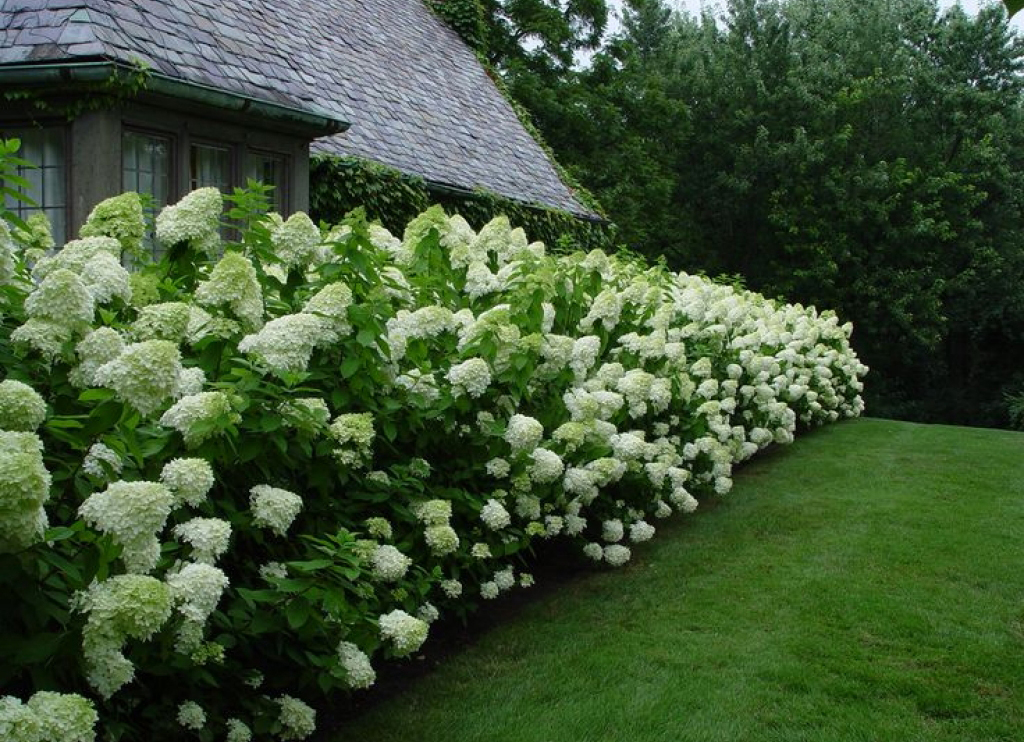
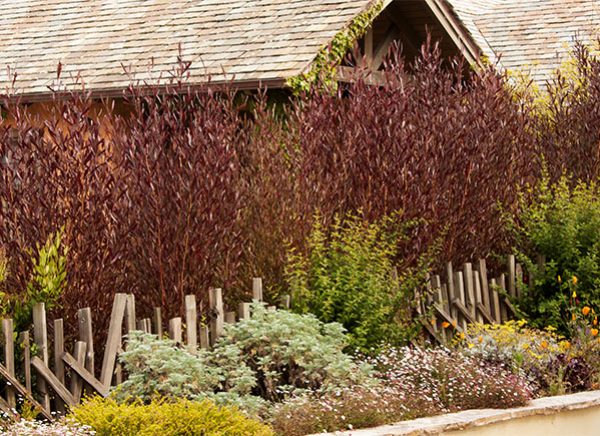
HOW MUCH WORK ARE YOU WILLING TO DO?
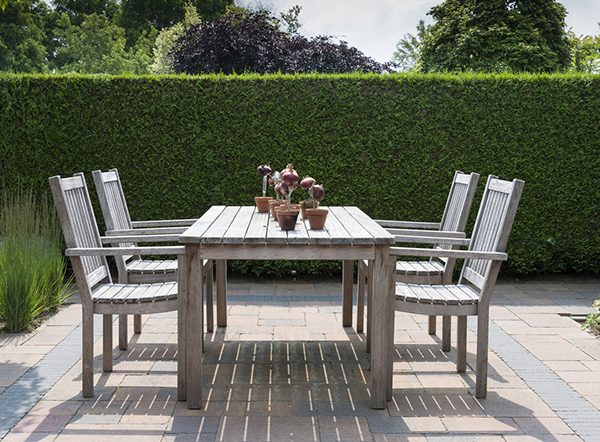
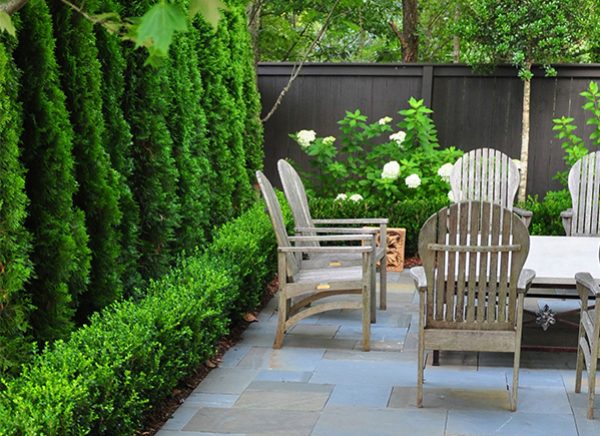
Sure, there are plenty of #gardenenvy options out there, but before you commit to a plant solution for privacy, be honest about how much of your time you’re willing to devote to maintenance.
Take the yew hedge at the left. Plenty of privacy and plenty elegant, but you’re looking at routine trips up and down ladders wielding hedge trimmers to keep it pristine. If you love this exact look and love to clip and snip, go for it. If not, a combination like the one on the right–a combo of Arborvitae and boxwood–is also narrow, solid, and dense, but needs much less work.
DO YOU WANT TO INTEGRATE OTHER ELEMENTS?
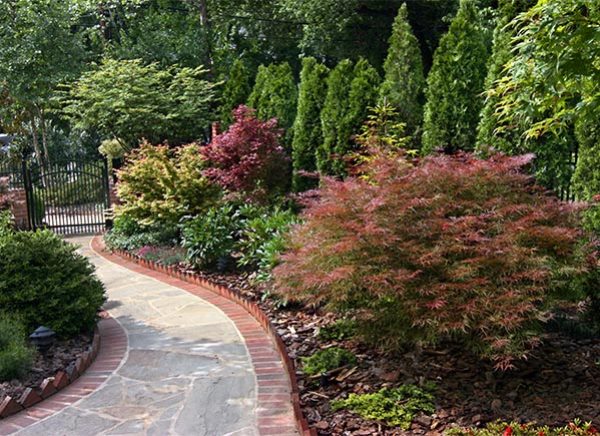
A solid hedge might not be the look your after and these examples demonstrate how layers put the “landscaping” into a landscape.
(Left) The line of evergreen shrubs would have been sufficient for privacy, but here they’re used as a backdrop. Adding the middle layer of shrubs adds interest and increases the sound barrier property of the hedge, too.
(Below left) Terracing this space below a row of conifers and then adding a row of Sargent crabapples makes privacy pretty rather than just a necessity.
(Below) If these are just too much, consider adding just a second row at the base of your shrubs. These barberry will grow to about 4 ft. tall and help to hide any gaps at the base of the shrubs.
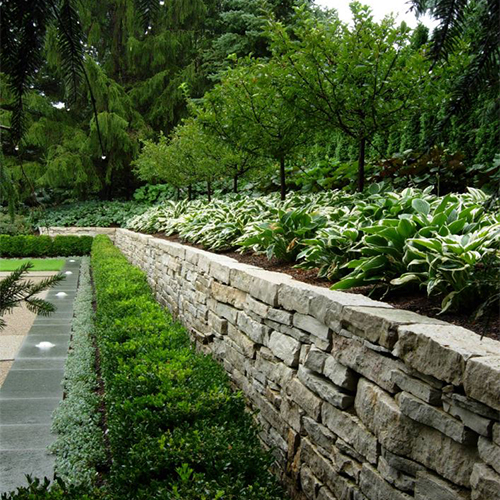
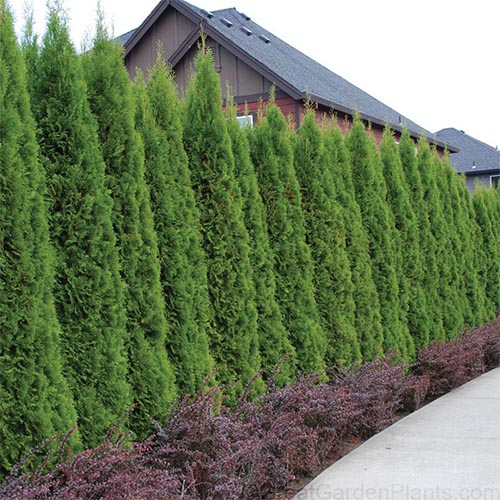
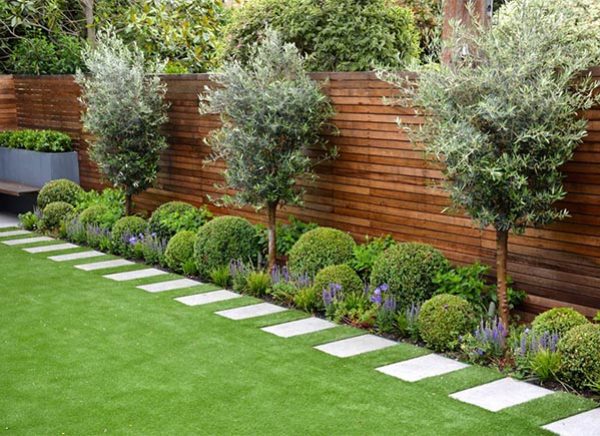
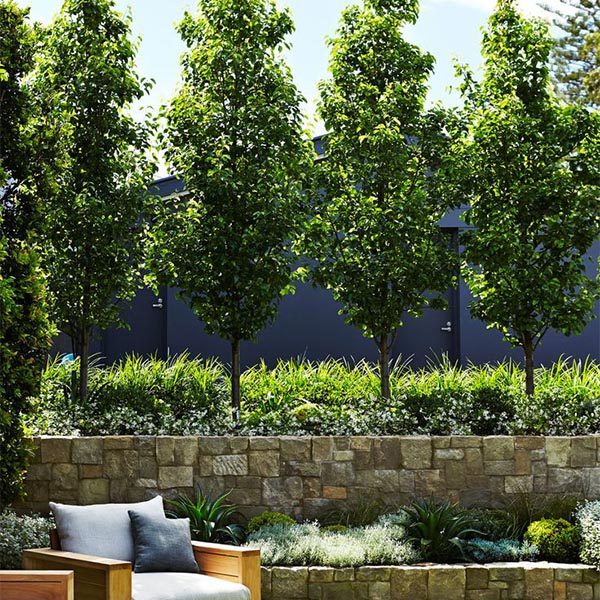
(Left) Hey, maybe you like your fence but not so much of it! A row of small trees adds even more height and padding.
(Right) Small-to-medium sized columnar trees (Hornbeam is one example) spaced well create a lush, green screen.
DO YOU WANT SOMETHING A BIT MORE CREATIVE?
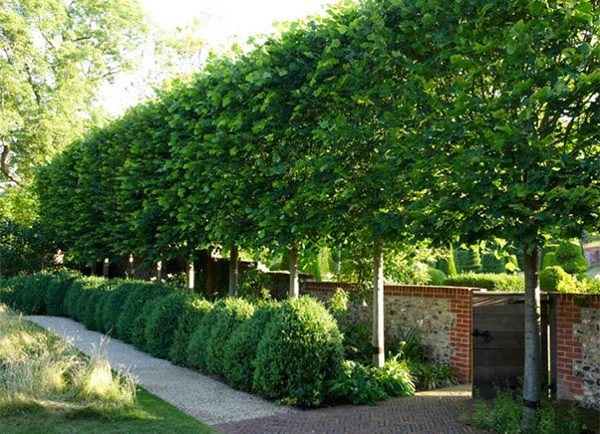
Fancy but functional, none of these are “difficult”, but each requires a level of love (by you or by your talented gardener!) to achieve. You won’t see these next door.
(Left) Pleaching involves weaving and tying of living tree branches together to make a flat, raised hedge with a clear stem below. Look how they’ve created a bit of window while getting plenty of privacy.
(Below left) If a hedge is not your thing, a planted privacy screen like this one, made from small gauge wire fencing on which vines can scramble, is an idea to consider.
(Below) Here, they’ve used espalier to create a living privacy wall. Espalier is the process of selecting certain lateral branches and tying them to a structure so they grow in the shape you want.
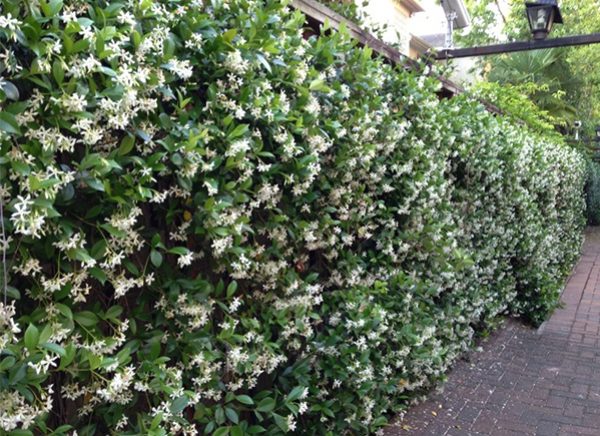
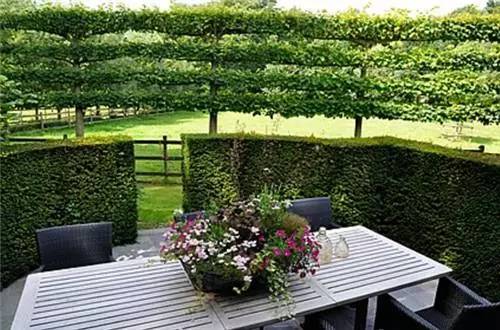
MORE CREATIVE SOLUTIONS FOR PRIVACY WITH PLANTS
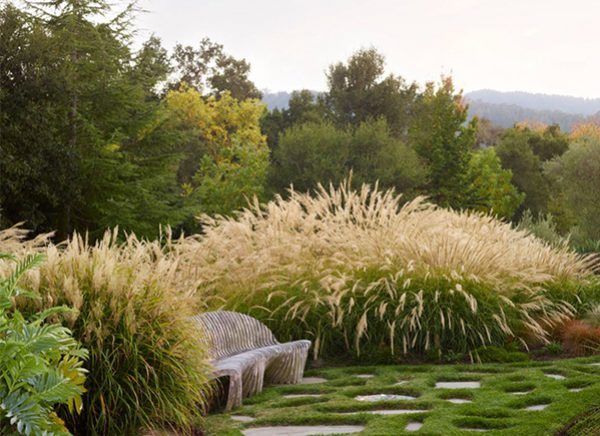
A few more options that provide privacy with a glammy edge.
(Left) Massed taller growing ornamental grasses create a seasonal screen that’s hard to beat for movement and texture.
(2nd row left) Bougainvillea’s long branches can be tied laterally to a sturdy structure to create this kind of horizontal screen.
(2nd row right) Chosen and planted with care, bamboo can be a good privacy option.(This is black bamboo which without containment may become invasive.)
(3rd row left) Planted in a raise bed, shrub roses can be the most romantic of privacy screens (these are Knock Out).
(3rd row right) Italian Cypress grows tall and narrow–we like how it’s uses here to add depth to an existing tall hedge.
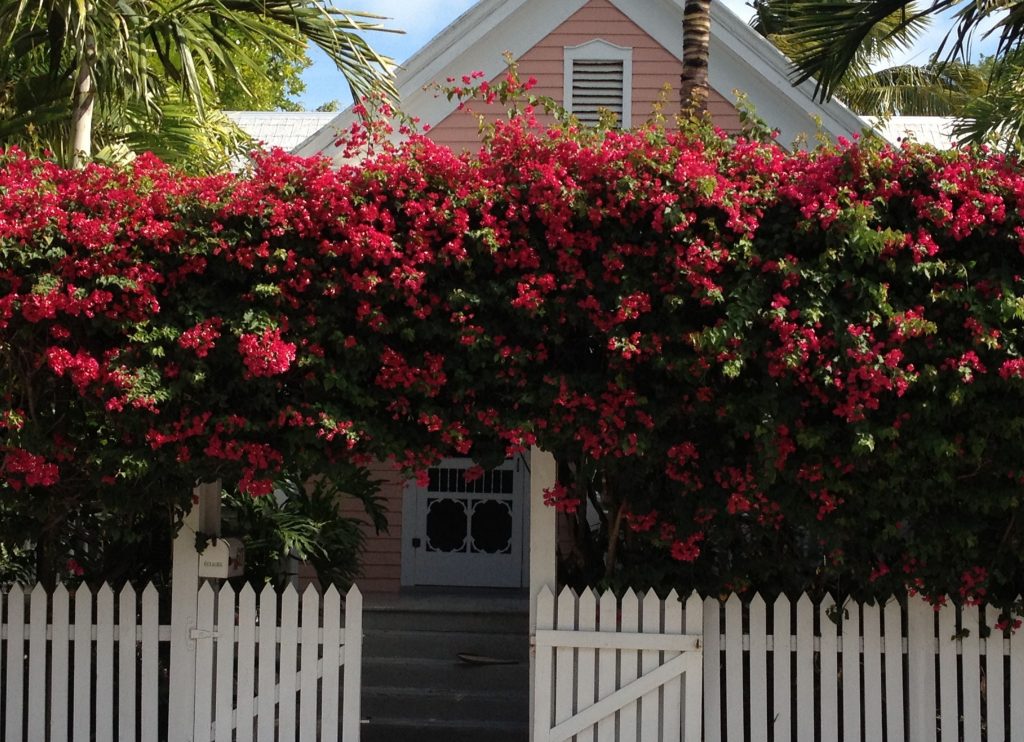
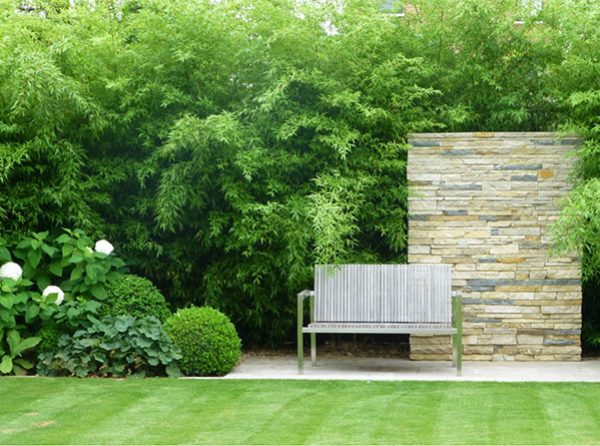
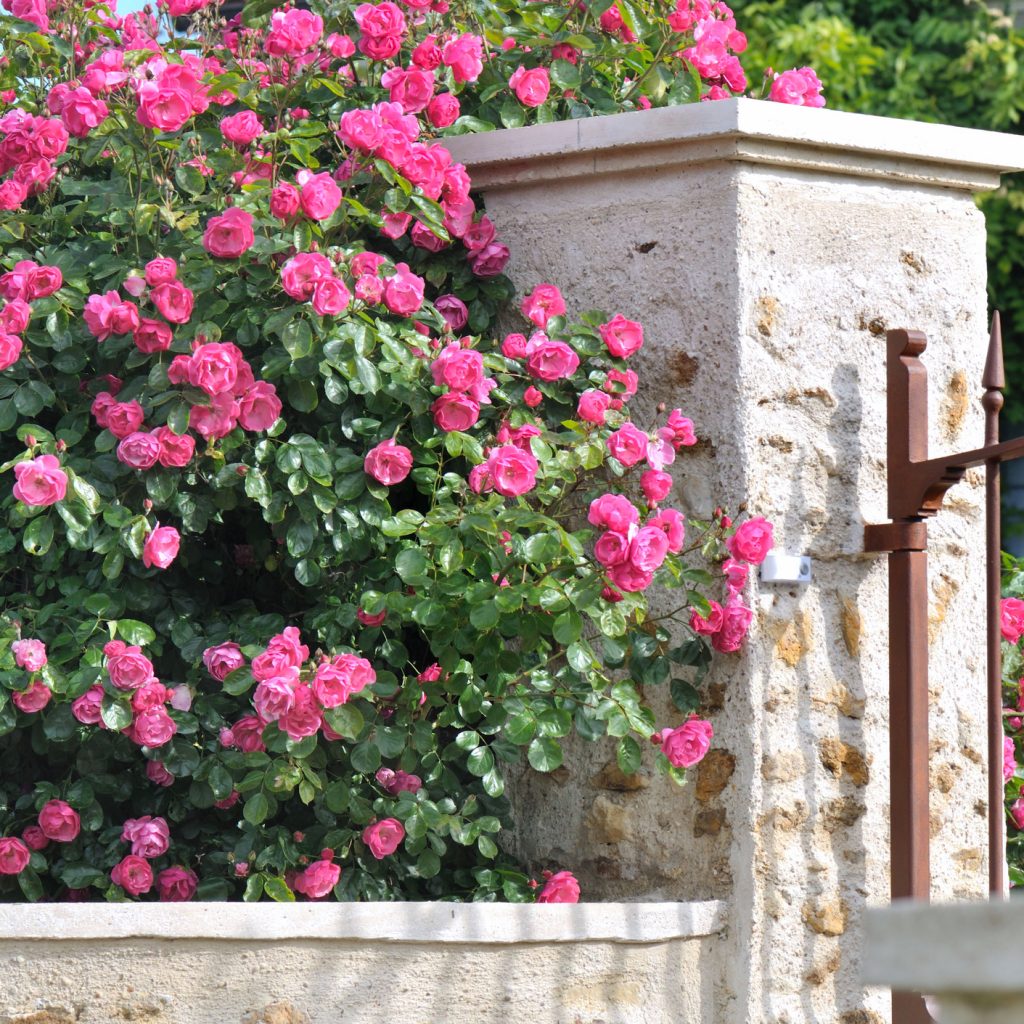
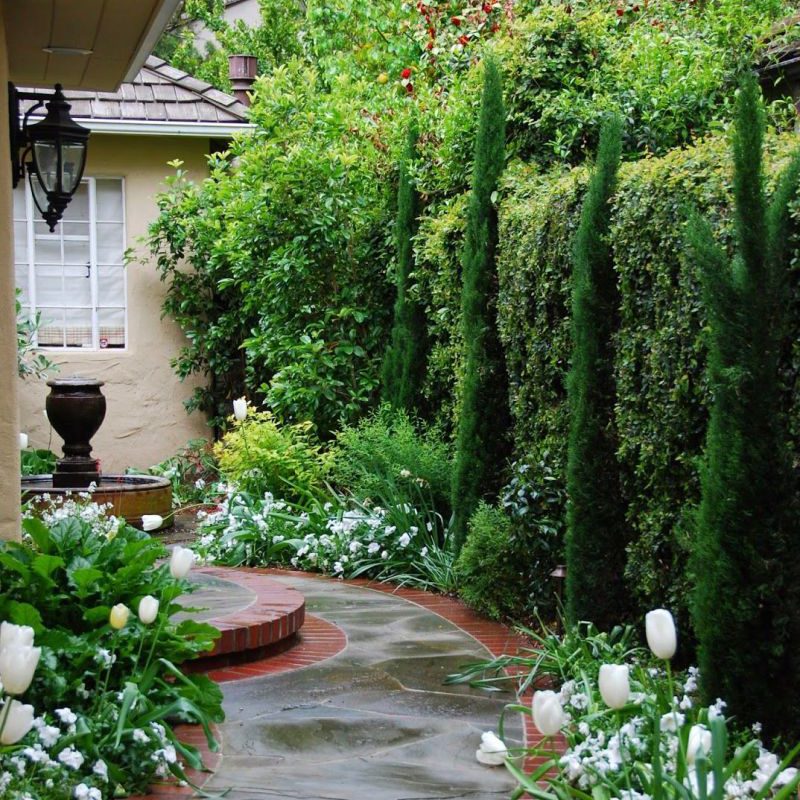
We’ve seen large scale solutions using plants for privacy. Here are a few ideas for smaller spaces! Simple garden center coir-lined metal baskets can be planted then suspended at different heights to create a bit of privacy on a porch. And, where planting in the ground is not an option, a row of tall matching containers filled with a shrubby plant makes for a wall of green just about anywhere.
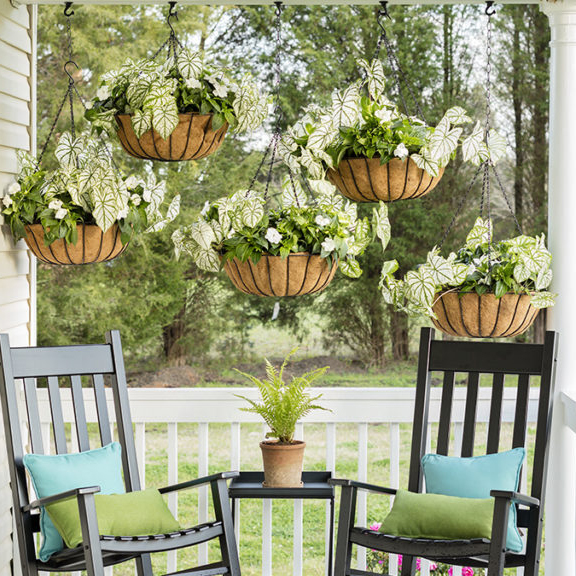
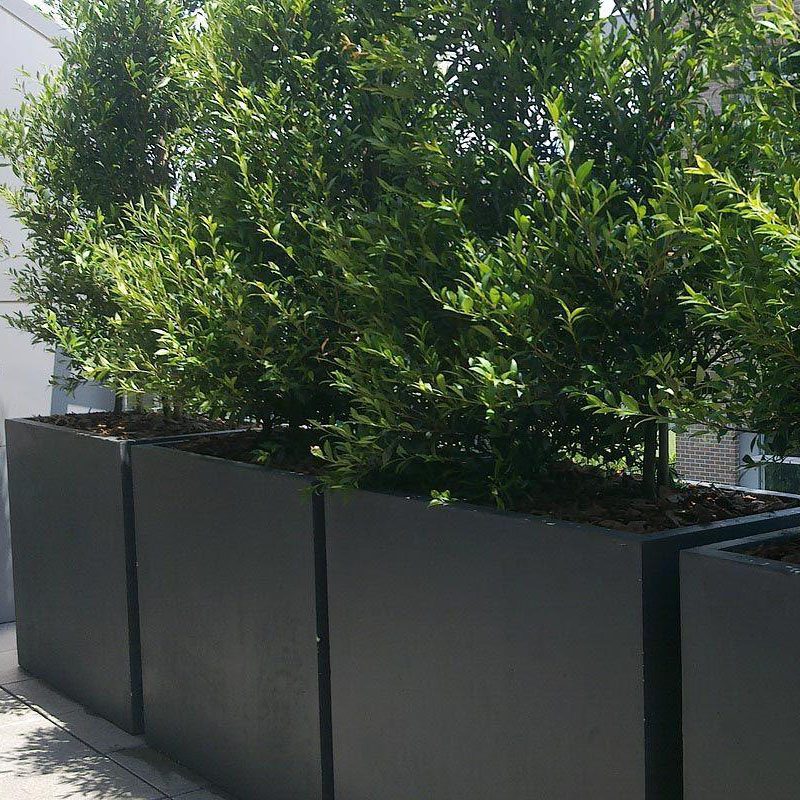
MISSED OPPORTUNITIES
We are NOT here to judge, we’re here to learn from each other. Here are a few examples where a small change would have made a big impact.
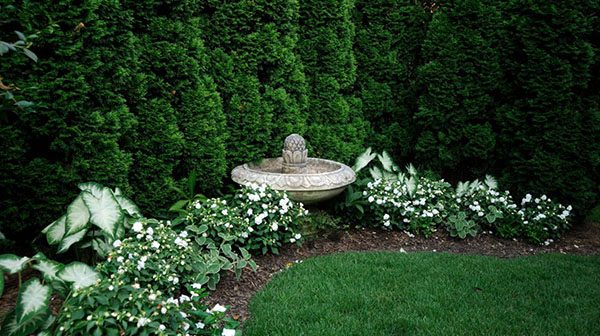
Scale up!
That is one gorgeous dense and lush privacy screen–textbook, in fact.
The missed opportunity here is the chance to create a strong middle layer that would be in better scale with those tall shrubs and smaller annuals. A larger and taller fountain would have made all the difference here.
Takeaway: Privacy plants that serve their purpose are probably going to be tall. Play with that lovely feature by adding elements that are at least 1/2 as tall as the plants.
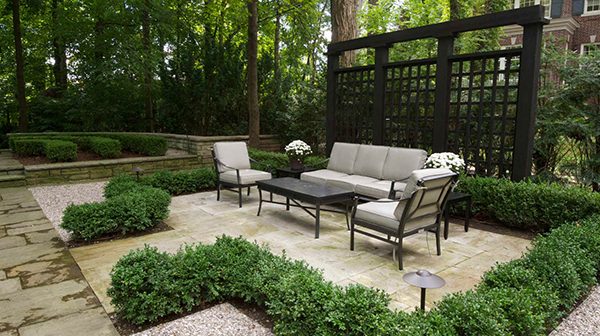
Finish your thought.
We love the idea of using lattice panels in the garden to provide privacy while still letting lots of light and air come through.
While this trellis does what it means to–provides separation from the house–the missed opportunity here is that there are no other elements that relate to this structure.
Takeaway: Just a few taller containers or capping the boxwood hedge with larger boxwood globes would have make this a home run.
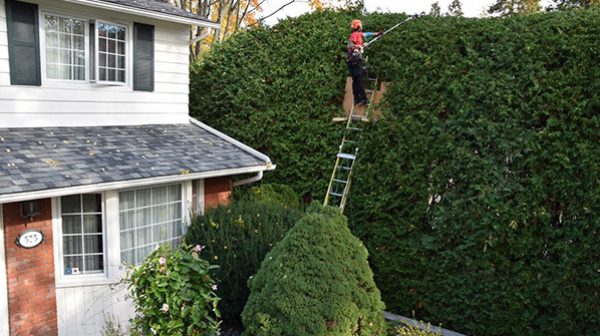
Consider the neighbors
There’s privacy and then there’s building a fortress! Now some of us may look at this and be envious of the wall of visual silence this hedge provides, shielding the view of whatever is on the other side.
While it’s true that “good fences make good neighbors”, ask yourself if having a hedge that’s as tall as the house is the statement you want to make.
Takeaway: Consider the mature height of your privacy plants and evaluate the impact they might have on neighbor relations.
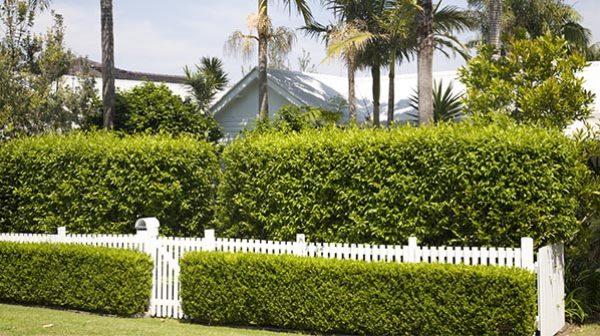
Yes, scale AGAIN
This has all the right moves–lots of textures and different heights– and it’s really cool, but it misses the mark by not following the rule of thirds. The fence is too low which makes the height of the front, shorter hedge visually confusing.
Takeaway: When designing a layered hedge, use this formula–8′, 6′, 4′–and the proportions will always be right.





